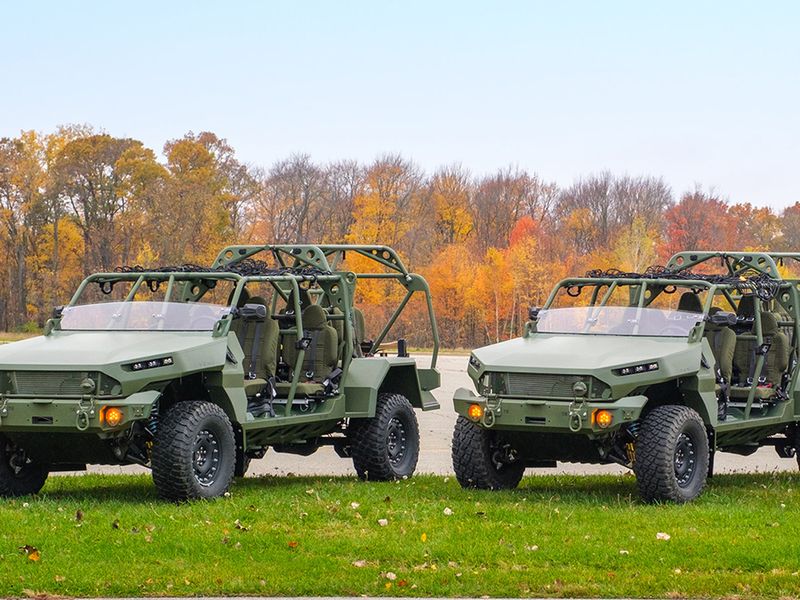
DETROIT — General Motors’ defense subsidiary, which delivered its first Infantry Squad Vehicle on Tuesday to the U.S. Army, could soon use GM’s electrification development for military applications.
The truck delivered Tuesday is the first major product for GM Defense since it was reestablished by GM in 2017. The original GM Defense, which helped U.S. combat efforts beginning with World War I, was acquired by General Dynamics in 2003.
“There’s a relearning process for the company to get back its skill. This represents a fantastic cornerstone program for us to do just that,” David Albritton, president of GM Defense, told reporters Tuesday.
The vehicle, based on the Chevrolet Colorado ZR2, can transport nine soldiers and their equipment. Despite coronavirus-related challenges, GM developed the vehicle in just four months after it was awarded a $214.3 million defense contract in June. GM Defense said it will build 649 of the vehicles through 2024 and will support production of up to 2,065 vehicles with additional authorization over eight years.
The truck is made up of 90 percent commercial, off-the-shelf parts, including Chevy Performance race components, and was engineered for rapid movement. It is light enough to be sling loaded from a UH-60 Black Hawk helicopter and can fit inside a CH-47 Chinook helicopter to be transported by air.
The first 27 vehicles will be built at GM’s Milford Proving Grounds, and GM Defense plans to use a plant in Mooresville, N.C., for higher-volume production.
GM Defense plans to work on projects beyond ground vehicles, said Albritton. The subsidiary has a cooperative research agreement with the U.S. Air Force to supply batteries used in the Chevrolet Bolt in place of a large diesel generator that’s used when aircraft don’t have their main engines on. GM Defense could also provide alternative propulsion systems for unmanned, underwater vehicles, said Albritton.
“There’s a wide variety of things we can look at across the capabilities of GM and apply them in different contexts. And we’re looking widely at those opportunities,” said Albritton.
Fuel cell infrastructure isn’t available to GM Defense today, but Albritton expects to build fuel-cell-powered defense vehicles in the future.
Tim Herrick, global chief engineer at GM, said the automaker can help GM Defense “mix and match” components and architectures to deliver more military vehicles.
“There’s no reason we couldn’t take the components of a Hummer and put it in flexible architecture and the propulsion system,” he said. “Putting the Legos together and building more out of fewer parts is really what we do best.
“We can have a lot of solutions for the Army and the soldiers going forward.”